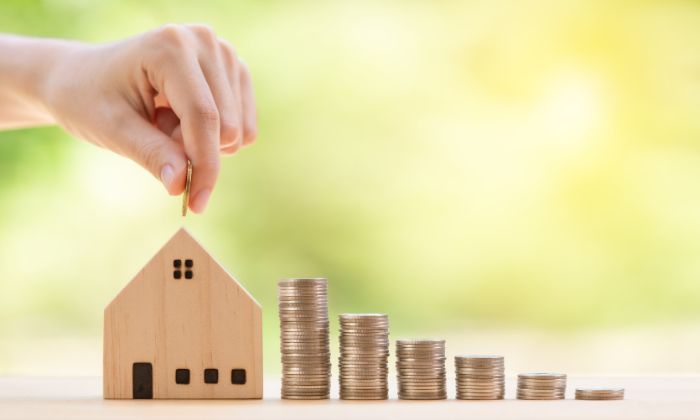How to Buy a House in 2025?

The pandemic sparked a housing boom with low mortgage rates, bidding wars, inventory shortages, and soaring prices. Thankfully, that boom is largely over, as inflation and rising interest rates have cooled buyers’ enthusiasm.
Though the market is normalizing, both home prices and mortgage rates remain high. Inventory is slowly increasing, but a shortage of homes still gives sellers an advantage. While a crash is unlikely, analysts expect a shift to a more balanced market, favoring buyers.
Buying a home is an exciting yet emotional process. To make the best decisions for your family and budget, it’s crucial to understand the homebuying process. Here’s what to know before you begin.
Buying a House: A Step-by-Step Guide
1. Determine why you want to buy
Purchasing a home is a major decision that shouldn’t be taken lightly. If you’re not clear on exactly what you want out of homeownership, you could end up regretting your purchase.
• Make a list of what’s important to you in a home. Is location the top priority? Any must-have amenities?
• Analyze whether buying makes sense for you financially. Would renting for another year or two improve your financial standing?
• Be sure you’re prepared for the ongoing expenses of maintaining a home.
2. Check your credit score
Your credit score will help you determine your financing options; lenders use it (among other factors) to set the terms and rates of your loan. The higher your score, the lower the interest rate you will be eligible for — lower credit scores equate to more expensive mortgages.
• Consider how different credit score ranges impact your interest rate, monthly payments and total interest.
• Pull your credit reports from each of the credit bureaus for free every 12 months at AnnualCreditReport.com.
• Learn other ways to get your free credit report and score.
3. Save for a down payment
To avoid having to pay private mortgage insurance, or PMI, you’ll need to put down at least 20 percent of the home’s purchase price for a down payment. Some lenders offer mortgages without PMI with lower down payments, but expect to pay a higher interest rate. And be sure to do your research: Many types of loans require a much lower minimum down payment, and there are many government programs to help cover down payment costs for qualified buyers. Shop around carefully based on how much you’re able to pay upfront.
• Consider options offered by the federal government. If you qualify for an FHA, VA or USDA loan, your down payment minimum will be considerably lower than 20 percent.
• Conventional loans offered by Fannie Mae and Freddie Mac, meanwhile, require just 3 percent down.
• Look into local and state down payment assistance programs to see if you’re eligible for a cost-saving loan or grant.
4. Create a housing budget
The purchase price and down payment amount aren’t a complete picture of what to know when buying a house. Setting a realistic budget for your new home will help inform how much you can afford and what your all-in costs will be.
• Figure out how much you can set aside for a down payment, plus a buffer fund for ongoing or unexpected maintenance costs.
• Determine the maximum loan you qualify for. Getting preapproved can help (see Step 5).
• Analyze your monthly budget to make sure you can handle mortgage payments along with your other day-to-day bills.
5. Shop for a mortgage
Getting preapproved for a mortgage gives you a firmer handle on how much you can afford, and it’s helpful when you make an offer on a house because it shows sellers you’re financially qualified. Once you’re ready to apply for official approval, you’re not obligated to stick with the same lender that issued your preapproval — compare the terms and rates offered by several companies.
• Work with an experienced mortgage lender who can walk you through all the options you’re eligible for.
• Your lender should be able to guide you through each option’s overall costs as well.
• If you’re a first-time homebuyer, inquire about what programs or incentives might be available to you.
6. Hire a local real estate agent
An experienced agent can save you time and money by helping you find the right home and negotiating with the seller on your behalf. Agents are licensed professionals who know their markets well and can guide you through your homebuying journey.
• Before hiring an agent, ask about their track record and knowledge of your desired neighborhood.
• Inquire about their workload as well. You don’t want someone who is juggling so many clients that they’re over-scheduled.
7. Go house-hunting
Viewing listings online is helpful, but isn’t a substitute for visiting homes in person and getting to know the area and its amenities. In some cases, the right neighborhood might be even more important than the home itself.
• Explore neighborhoods you like to see what’s for sale, and attend open houses for homes that pique your interest.
• Take detailed notes on each property you visit — after a few, they can start to blend together in your mind.
• Keep your schedule open so you can pounce when a great home is listed, especially in a competitive market.
8. Make an offer
Understanding how to make an attractive offer on a home can help increase the chance of it being accepted. Confer with your real estate agent and let their expertise lead the way.
• Think carefully about what contingency clauses to include in your contract. Common real estate contingencies can hinge on financing, appraisal, home inspection and more.
• It’s not unusual for sellers to make a counteroffer. You can respond if you wish to keep negotiating, or reject it and move on.
• Once an offer is accepted, you’ll sign a purchase agreement and pay an earnest money deposit, typically 1 to 2 percent of the purchase price. The funds will be held in escrow until closing.

9. Get a home inspection
A home inspection provides an overall picture of the property’s condition and any mechanical or structural issues it might have. This will help you determine how to proceed: If major problems are found, you might want to ask the seller for repairs — or, if there’s an inspection contingency in the contract, you might even decide to back out of the deal.
• Check the inspector’s experience by reading online reviews, asking for client references and looking at their credentials.
• Home inspection checklist can help you understand what is and isn’t covered.
• Fees can vary, you’ll likely pay somewhere between $296 and $424. The average is $343.
10. Negotiate repairs and credits
Your home inspection may reveal a few issues, especially if it’s an older home. Major problems might need to be dealt with before your mortgage lender will finalize your loan, and it’s common to negotiate for the seller to either pay for the repair or offer the buyer a credit to cover the cost.
• Hazardous problems like structural damage or improper electrical wiring could keep your lender from approving your loan, so take the solutions very seriously.
• An experienced agent will know what repair costs you should ask the seller to cover and what is not worth asking for.
• Some sellers won’t agree to extensive repairs. That’s why a home inspection contingency is important — it gives you a way out of the deal if you need it.
11. Secure your financing
A preapproval is not the same thing as official approval. Getting final loan approval means you need to keep your finances and credit in line during the underwriting process. Don’t open new credit lines or make any major purchases until the paperwork is signed, and avoid changing jobs before closing too, if possible.
• Being preapproved doesn’t mean you’re officially in the clear — that’s not the case until a lender has given your loan the final stamp of approval.
• Keep your finances and credit in good shape from preapproval until closing day.
• Avoid running up credit cards, taking out new loans or closing old credit accounts. All these things can hurt your credit score or impact your debt-to-income ratio, which can imperil your final loan approval.
12. Do a final walk-through
A final walk-through is your opportunity to view the property one last time before the deal is done. This is your last chance to address any outstanding issues before the house becomes your property — and your responsibility.
• Ask your agent to attend with you — they can act as a witness and help answer any questions.
• If any problems remain, have your agent communicate immediately with the seller and your lender.
• Your closing date might have to be delayed to ensure all issues are remedied first.
13. Close on your house
Once all contingencies have been met, you’re happy with the final walk-through and your lender has declared your loan “clear to close,” it’s finally time to make it official and close on your new home. After all of the paperwork has been signed, the home is officially yours and you’ll get the keys. Congratulations!
• When you get your closing disclosure, compare it to your loan estimate to ensure the terms are the same. Ask any questions and correct any errors before you sign the paperwork.
• On closing day, review all the documents you sign carefully, and ask for clarification on anything you don’t understand.
• Make sure you’re given all house keys, entry codes and garage door openers before leaving the closing.
Give me a call at 678-744-8070 and let’s discuss your options. 🙋♀️

 Facebook
Facebook
 X
X
 Pinterest
Pinterest
 Copy Link
Copy Link










































































